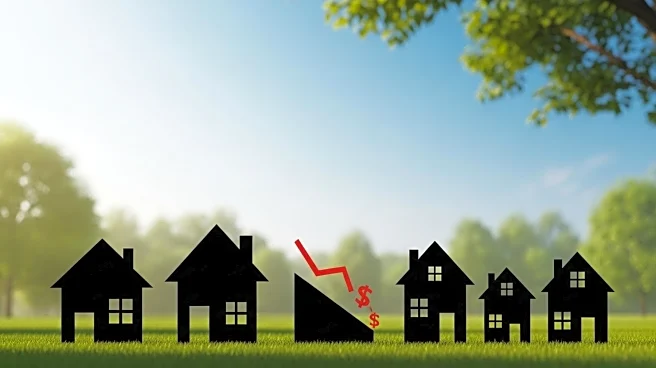What's Happening?
In August, Worcester County saw a decrease in the median list price for homes, dropping to $559,900 from the previous month's $569,450, according to data from Realtor.com. This represents a 1.7% decrease month-over-month, but a 5.7% increase compared to August 2024, when the median list price was $529,900. The statistics focus on homes listed for sale, not those sold, with the median home size being 1,937 square feet and listed at $293 per square foot. This price per square foot is up 3.8% from August 2024. Homes in Worcester County were listed for a median of 37 days, which is shorter than the national median of 60 days. Additionally, 832 homes were newly listed in August, marking a 1.5% increase from the previous year.
Why It's Important?
The adjustment in home listing prices in Worcester County reflects broader trends in the real estate market, potentially affecting buyers and sellers. The increase in price per square foot suggests a competitive market, which could influence affordability and investment decisions. The shorter listing duration compared to the national average indicates strong demand, possibly driven by local economic factors or housing shortages. These dynamics are crucial for stakeholders, including real estate agents, investors, and potential homeowners, as they navigate pricing strategies and market conditions.
What's Next?
As the real estate market continues to evolve, stakeholders may anticipate further adjustments in listing prices and market dynamics. Potential buyers might face increased competition, while sellers could benefit from the demand-driven market. Real estate professionals may need to adapt their strategies to accommodate these changes, focusing on market analysis and client advisement. Additionally, local economic conditions and housing policies could play a role in shaping future trends.
Beyond the Headlines
The changes in Worcester County's real estate market may have deeper implications, such as influencing local economic growth and community development. As housing prices fluctuate, there could be impacts on demographic shifts, urban planning, and infrastructure development. These factors might also affect social dynamics, including affordability and access to housing, prompting discussions on sustainable development and equitable housing policies.










